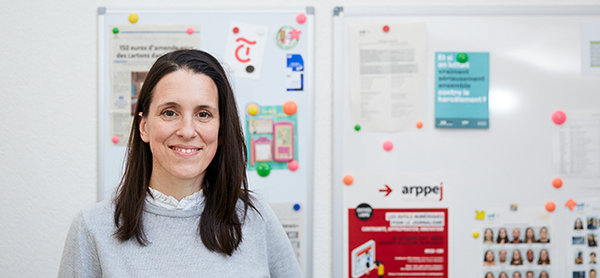Inventive local media buck the trend

The internet has plunged the press into a grave crisis. Nathalie Pignard-Cheynel investigates how local media use digital channels to get closer to their readers.
The researcher Nathalie Pignard-Cheynel is in no doubt: “The media are a key element in our democracy. They inform, but they also shape public opinion.” However, these are challenging times for the press, as they face the combined threat of plummeting earnings, dwindling trust and competition from social media.
How are the local media using digital means to keep their readership on board? This is the main focus of Pignard-Cheynel’s research project, which is funded by the SNSF within the scope of the initiative “Digital Lives”. “Science has chiefly studied large media companies and neglected local media. Despite the fact that local media play an important role in shaping a shared identity. And some of them are very innovative,” says Pignard-Cheynel, assistant professor of digital journalism at the University of Neuchâtel.
Digital and analogue measures
Together with other research teams, Nathalie Pignard-Cheynel has analysed over 300 activities by local media in Switzerland, France and Belgium since 2019. The editors themselves enter the details in an online form. All data are freely accessible. “This openness increases the project’s visibility and gives the media an incentive to participate.”
Some of the activities are purely digital, for example the chatbot launched by “La Liberté” in Fribourg, the hashtag #BalanceTonTaudis – a response by “La Marseillaise” to decaying buildings – or Facebook groups on the topic of zero waste.
However, the numerous traditional measures were a surprise: editorial board meetings in cafés, public talks or a mobile newspaper stall on the market square. In such cases, digital media serve as an addon, a means of continuing the debate online.
Long-term strategy?
In the second part of the project, Pignard-Cheynel will analyse different aspects in depth, based on extensive conversations with a dozen local media outlets. Are their activities an isolated reaction? Or are they part of a sustainable change in editorial strategy? “I also want to find out if this is simply a new version of participatory journalism. Or are these media developing a socially responsible journalism that seeks solutions and wants to play an even more active role in society?”
Pignard-Cheynel’s team have been presenting the results of their use-inspired research at scientific conferences. “We are mainly looking at the current situation and the effects of these actions,” says the researcher. “But we also want to help develop some of the better ones and make them more widely known. Local journalism has scant resources at its disposal for innovation. If we can provide support and strengthen our democratic society at the same time, I will be delighted.”